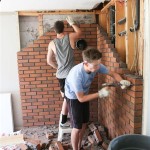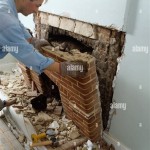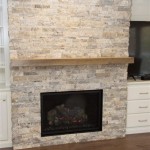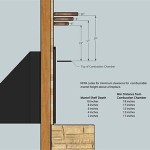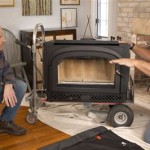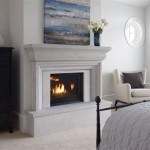Gas Freestanding Fireplace Stoves: A Comprehensive Overview
Gas freestanding fireplace stoves offer a blend of aesthetics, convenience, and heating efficiency, making them a popular choice for homeowners seeking supplemental or even primary heating solutions. Unlike traditional wood-burning stoves, gas models eliminate the need for wood storage, chopping, and ash disposal, while still providing the visual appeal of a flickering flame. This article delves into the various aspects of gas freestanding fireplace stoves, including their functionality, types, installation considerations, maintenance requirements, and safety features.
The core function of a gas freestanding fireplace stove is to generate heat through the combustion of natural gas or propane. A burner assembly within the stove is fueled by a gas line, igniting and producing a controlled, consistent flame. This heat is then radiated outwards into the room, providing warmth and creating a cozy ambiance. The intensity of the flame and the heat output can typically be adjusted using a control knob or a remote control, allowing users to customize the heating experience according to their preferences and the room's temperature.
The exterior of a gas freestanding fireplace stove is designed to resemble a traditional wood-burning stove. Various materials, such as cast iron, steel, or ceramic, are used to construct the body, providing durability and aesthetic appeal. Many models feature a large viewing window made of heat-resistant glass, allowing users to enjoy the visual spectacle of the dancing flames. The design may incorporate decorative elements, such as intricate castings, arched doors, or realistic-looking logs, further enhancing the stove's visual appeal.
Fuel Types and Considerations
Gas freestanding fireplace stoves are primarily designed to operate on either natural gas or propane. Natural gas is typically supplied through municipal gas lines, making it a convenient option for homes already connected to the gas grid. Propane, on the other hand, is stored in tanks and requires regular refilling. The choice between natural gas and propane depends on several factors, including the availability of natural gas in the area, the cost of each fuel type, and the potential for storing propane tanks on the property.
A crucial consideration when selecting a gas freestanding fireplace stove is the fuel type compatibility. Stoves are designed to operate specifically on either natural gas or propane, and it is not possible to switch between the two without making significant modifications to the stove's burner assembly and gas valve. Trying to operate a stove on the incorrect fuel type can lead to inefficient combustion, safety hazards, and potential damage to the appliance. Therefore, it is essential to carefully verify the fuel type requirements before purchasing a stove and to ensure that the gas supply matches the stove's specifications.
The heating value of natural gas and propane also differs, which affects the stove's heat output and the amount of fuel consumed. Propane contains more energy per unit volume than natural gas, meaning that a propane stove will typically produce more heat than a natural gas stove of the same size and burner capacity. However, propane also tends to be more expensive than natural gas, so the overall cost-effectiveness depends on the local fuel prices and the heating needs of the home.
Installation and Venting Requirements
Proper installation is paramount for the safe and efficient operation of a gas freestanding fireplace stove. It is strongly recommended that installation be performed by a qualified and licensed gas appliance technician. Improper installation can lead to gas leaks, carbon monoxide poisoning, and other serious hazards.
The first step in the installation process is to determine the appropriate location for the stove. The location should be on a level, non-combustible surface and should comply with all local building codes and manufacturer's recommendations regarding clearances from combustible materials. Adequate ventilation is critical to prevent overheating and to ensure the safe and complete combustion of the gas fuel. Proper ventilation also helps to remove any combustion byproducts, such as carbon monoxide, from the room.
Gas freestanding fireplace stoves require venting to the outdoors to expel combustion gases. There are two primary venting options: direct vent and B-vent. Direct vent stoves draw combustion air from the outside and exhaust combustion gases to the outside through a sealed venting system. This type of venting is considered to be the safest and most efficient option, as it eliminates the risk of backdrafting and minimizes heat loss. B-vent stoves, on the other hand, draw combustion air from the room and exhaust combustion gases through a vertical vent pipe that connects to a chimney. B-vent stoves are less efficient than direct vent stoves and are subject to backdrafting if the chimney is not properly sized and maintained.
The venting system must be installed according to the manufacturer's specifications and local building codes. The vent pipe should be made of the appropriate material, such as stainless steel or aluminum, and should be properly sealed to prevent leaks. The vent termination point should be located in a position that allows for unobstructed airflow and prevents the reentry of combustion gases into the building.
Safety Features and Maintenance
Gas freestanding fireplace stoves are equipped with several safety features to prevent accidents and ensure safe operation. These features typically include a thermocouple or pilot safety system, which automatically shuts off the gas supply if the pilot light goes out. Some models also feature an oxygen depletion sensor (ODS), which detects low oxygen levels in the room and shuts off the gas supply to prevent carbon monoxide poisoning. It is essential to understand the function of these safety features and to test them periodically to ensure that they are working correctly.
Regular maintenance is necessary to keep a gas freestanding fireplace stove operating safely and efficiently. The frequency of maintenance depends on the stove's usage and the manufacturer's recommendations, but generally, an annual inspection and cleaning by a qualified technician is advisable. During the inspection, the technician will check the gas connections for leaks, clean the burner assembly, inspect the venting system, and test the safety features.
Homeowners can also perform some basic maintenance tasks themselves. These tasks include cleaning the glass viewing window with a non-abrasive cleaner, vacuuming the area around the stove to remove dust and debris, and inspecting the venting system for any signs of damage or blockage. It is important to never use flammable liquids to clean the stove and to avoid touching any hot surfaces.
Carbon monoxide detectors should be installed in the home, especially near sleeping areas. Carbon monoxide is a colorless, odorless, and poisonous gas that can be produced by incomplete combustion of fossil fuels. If a carbon monoxide detector alarms, it is important to immediately evacuate the building and call the fire department or gas company.
By understanding the functionality, installation requirements, safety features, and maintenance needs of gas freestanding fireplace stoves, homeowners can make informed decisions about incorporating these appliances into their homes and ensuring their safe and efficient operation.

Freestanding Gas Burning Stoves Sierra Hearth And Home

Enviro Westley Freestanding Gas Stove Northfield Fireplace Grill

Free Standing Gas Stoves Hearth And Home Pe

Gas Stoves Fireplace And Stove The Hearth Doctor Inc

Enviro S50 Gas Freestanding Stove Wizard S Hearth Home

Enviro S20i Freestanding Gas Stove Northfield Fireplace Grill

Gas Stoves Freestanding Stove Fireplaces Napoleon

Gas Stoves Made In Usa Lopi

Lennox Visions Elite Series Direct Vent Freestanding Stove

Procom Vent Free Indoor Stove 25 000 Btu Standing Dual Fuel Propane And Natural Gas 170173 The Home Depot

